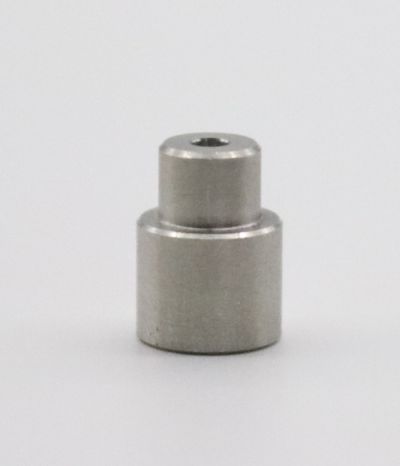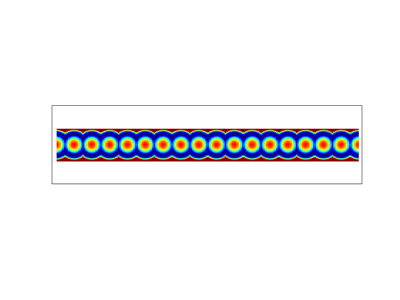collimated beams (original) (raw)
Definition: laser beams with weak divergence
Related: beam collimatorslaser diode collimatorsfiber collimatorslaser beamsbeam divergencebeam radiuslenses
Page views in 12 months: 5697
DOI: 10.61835/0gv Cite the article: BibTex BibLaTex plain textHTML Link to this page! LinkedIn
Content quality and neutrality are maintained according to our editorial policy.
📦 For purchasing beam collimators, use the RP Photonics Buyer's Guide — an expert-curated directory for finding all relevant suppliers, which also offers advanced purchasing assistance.
Contents
What are Collimated Beams?
A collimated beam of light is a beam (typically a laser beam) propagating in a homogeneous medium (e.g. in air) with a low beam divergence, so that the beam radius does not undergo significant changes within moderate propagation distances. In the simple (and frequently encountered) case of Gaussian beams, this means that the Rayleigh length must be long compared with the envisaged propagation distance. For example, a 1064-nm beam with a 1-mm beam radius at its beam waist has a Rayleigh length of ≈ 3 m in air, so that it can be considered as being collimated within a normal laboratory setup. Note that the Rayleigh length scales with the square of the beam waist radius, so that large beam radii are essential for long propagation distances.
For beams with non-ideal beam quality, the Rayleigh length is effectively reduced by the so-called _M_2 factor, so that the beam waist radius needs to be larger for a beam to be collimated.
When describing a collimated beam with light rays (geometrical optics), it consists of essentially parallel rays only. However, the ray picture cannot account for the phenomenon of beam divergence and is therefore of limited value.
How to Collimate a Beam
A divergent beam can be collimated with a beam collimator device, which in a simple case is essentially a lens or a curved mirror, where the focal length or curvature radius is chosen such that the originally curved wavefronts become flat. (Of course, the beam radius at the position of the lens or mirror should be large enough to obtain a low divergence.) Any residual divergence can be fine adjusted via the position of the lens or mirror along the beam direction. The collimation can be checked, for example, by measuring the evolution of beam radius over some distance in free space, via a Shack–Hartmann wavefront sensor, or with certain kinds of interferometers.
In principle, one can use lenses with very different focal lengths to collimate a diverging beam. The longer the focal length, the larger will be the resulting diameter of the collimated beam. Assuming a tight focus to start with (and subsequent beam expansion over a distance far beyond the Rayleigh length, the required distance between focus and collimation lens will equal the focal length. From that, one can obtain the collimated beam radius as the product of beam divergence half-angle (or precisely speaking its tangent) and the distance. And for a Gaussian beam, the beam divergence half-angle is ($\lambda / (\pi w_0)$). In total, we obtain (within the paraxial approximation): {w_{{\rm{col}}}} = \theta \;d = \frac{\lambda }{{\pi {w_0}}}f$$
In fiber optics, one often uses fiber collimators. These are available both for bare optical fibers and for connectorized fibers, i.e., for mating with fiber connectors.

Figure 1: A lens can collimate the output from a fiber, or launch a collimated beam into the fiber.
Collimating astigmatic beams usually requires a separate treatment in both transverse directions, e.g. with two different cylindrical lenses or curved laser mirrors. Special challenges arise for general astigmatic beams, where a simple separation of ($x$) and ($y$) direction is not possible, but such cases are rare in practice.
Use of Collimated Laser Beams
Collimated beams are very useful in laboratory setups because the beam radius stays approximately constant, so that the distances between optical components may be easily varied without applying extra optics, and excessive beam radii are avoided. Most solid-state lasers naturally emit collimated beams; a flat output coupler enforces flat wavefronts (i.e., a beam waist) at the output, and the beam waist is usually large enough to avoid excessive divergence. Edge-emitting laser diodes, however, emit strongly diverging beams, and are therefore often equipped with collimation optics — at least with a fast axis collimator, largely reducing the strong divergence in the “fast” direction. For fibers, a simple optical lens may often suffice for collimation, although the beam quality can be better preserved with an aspheric lens, particularly for single-mode fibers with a large numerical aperture.
Frequently Asked Questions
What is a collimated beam?
A collimated beam of light is a beam with very low beam divergence, meaning its radius does not change significantly over moderate propagation distances. For a Gaussian beam, this implies that its Rayleigh length is long compared to the travel distance.
How can a divergent beam be collimated?
A divergent beam can be made into a collimated one using a beam collimator, which is typically a lens or a curved mirror. The device is positioned to flatten the beam's originally curved wavefronts, resulting in a low-divergence output beam.
Why do many solid-state lasers naturally emit collimated beams?
Many solid-state lasers naturally emit collimated beams because their optical resonator, often using a flat output coupler, forces the laser light to have flat wavefronts at the output. This creates a beam waist that is usually large enough for low beam divergence.
Do all lasers produce collimated beams?
No, many important types do not. For instance, edge-emitting laser diodes and light exiting an optical fiber produce strongly diverging beams that require external optics, such as a collimating lens, to be formed into a collimated beam.
Suppliers
Sponsored content: The RP Photonics Buyer's Guide contains 63 suppliers for beam collimators. Among them:
⚙ hardware
Avantier offers a wide range of standard collimating lenses, which includes aspheric and achromatic lenses suitable for various light sources such as laser diodes with high divergence. These standard collimating lenses have the ability to convert divergent laser beams into well-collimated laser beams. These collimated beams can then be utilized for laser material processing, laser scanning applications, and interferometry by entering beam expanders.
⚙ hardware
CSRayzer provides different kinds of sing mode or polarization-maintaining fiber pigtail collimators, large beam collimators, and fixed focus collimators.
⚙ hardware
Collimation of single mode fibres can be made simple with the use of a PowerPhotonic fiber collimating micro lens array. We design and manufacture standard and custom in 1D and 2D arrays. All products are made in high grade fused silica and capable of both high efficiency and high power handling and our unique process minimises channel cross talk due to extremely low scatter. Lenses can spheric, aspheric or freeform due to our unique manufacturing process.
⚙ hardware
The FiberOut fiber collimator transforms the divergent beam emitted at the end of an optical fiber into a collimated one. It can be equipped with a variety of lenses, matching different fiber mode-field diameters and output beam sizes. The rugged, inexpensive collimator can be used for both FC/PC and FC/APC-type connectors. It can be easily mounted on post or into optical mounts (25 mm diameter).
⚙ hardware
Edmund Optics offers a wide range of laser accessories, including different kinds of beam collimators and expanders. In particular, we have fiber-coupled collimators which are suitable for FC/PC, FC/APC and SMA connectors. They are easy to integrate and are designed to collimate light exiting a fiber to a desired beam diameter or spot size or to focus light into a fiber when used in reverse.
⚙ hardware
The Model 02-M010 is a three-element, air-spaced anastigmat designed specifically for collimating the output of large diameter silica fibers used in high power medical and industrial applications. It is equally suitable for collimating the output of Large Mode Area (LMA) or Photonic Crystal (PC) fibers with smaller numerical apertures. The mechanical assembly allows a precise translation of the lens (without rotation) relative to the fiber face.
The unique design of the Model 02-M010 prevents retroreflections near the fiber face or within the core material. All elements are fused silica (the exception being the 1800–2000 nm collimator optics that are Infrasil) with either V-type or broadband coatings, depending on the operating wavelength range. When used for imaging purposes, the three-element design ensures the output mode from the fiber is preserved, without distortion, even at high throughput powers.
⚙ hardware
Shanghai Optics provide many different types of standard collimating lenses, including aspheric and achromatic lenses for many different light sources such as highly divergent laser diodes. Our standard collimating lenses can convert divergent laser beams to well-collimated laser beams that enter beam expanders for interferometry, laser material processing and laser scanning applications.
We also provide custom collimating lenses for projecting a source at infinity for infinite conjugate testing of optical systems. The collimating lenses can consist of several optical elements. The selection of optical materials and optical configuration depends on the entrance pupil diameter, wavelength, focal length, and field of view of the optical system under test.
Questions and Comments from Users
Here you can submit questions and comments. As far as they get accepted by the author, they will appear above this paragraph together with the author’s answer. The author will decide on acceptance based on certain criteria. Essentially, the issue must be of sufficiently broad interest.
Please do not enter personal data here. (See also our privacy declaration.) If you wish to receive personal feedback or consultancy from the author, please contact him, e.g. via e-mail.
By submitting the information, you give your consent to the potential publication of your inputs on our website according to our rules. (If you later retract your consent, we will delete those inputs.) As your inputs are first reviewed by the author, they may be published with some delay.
 general optics
general optics











